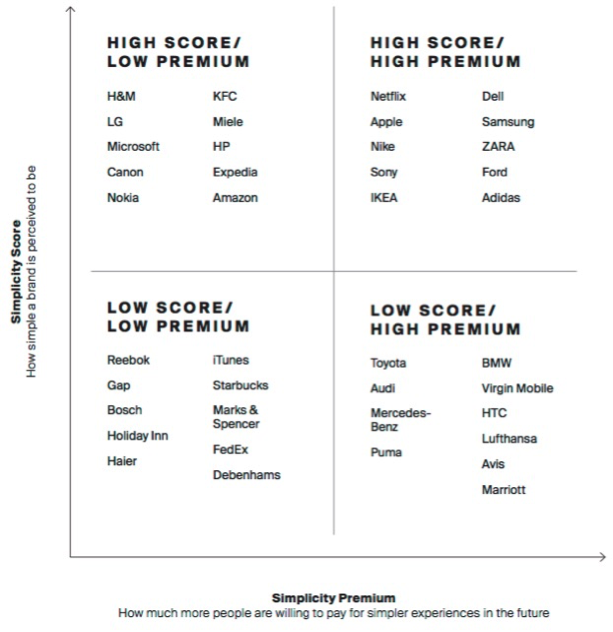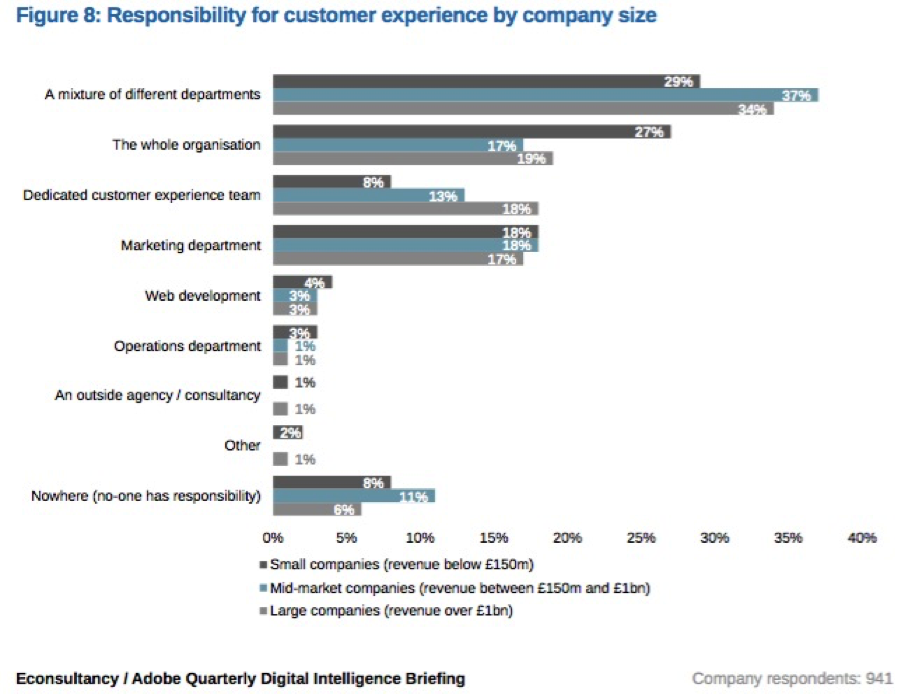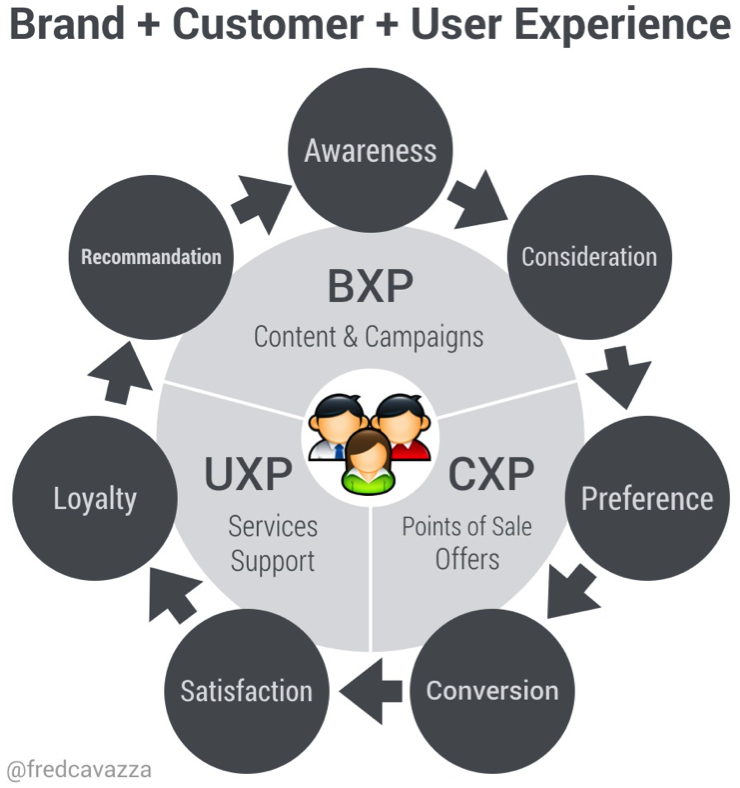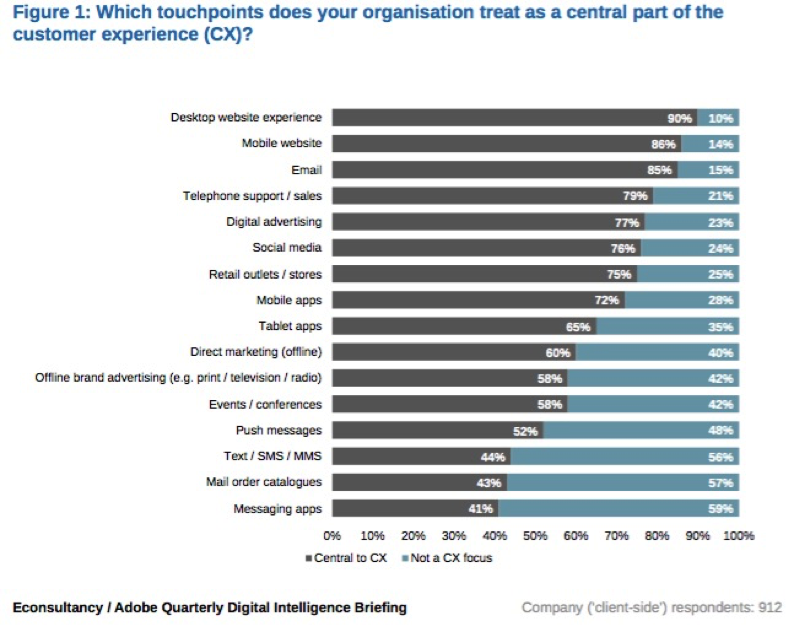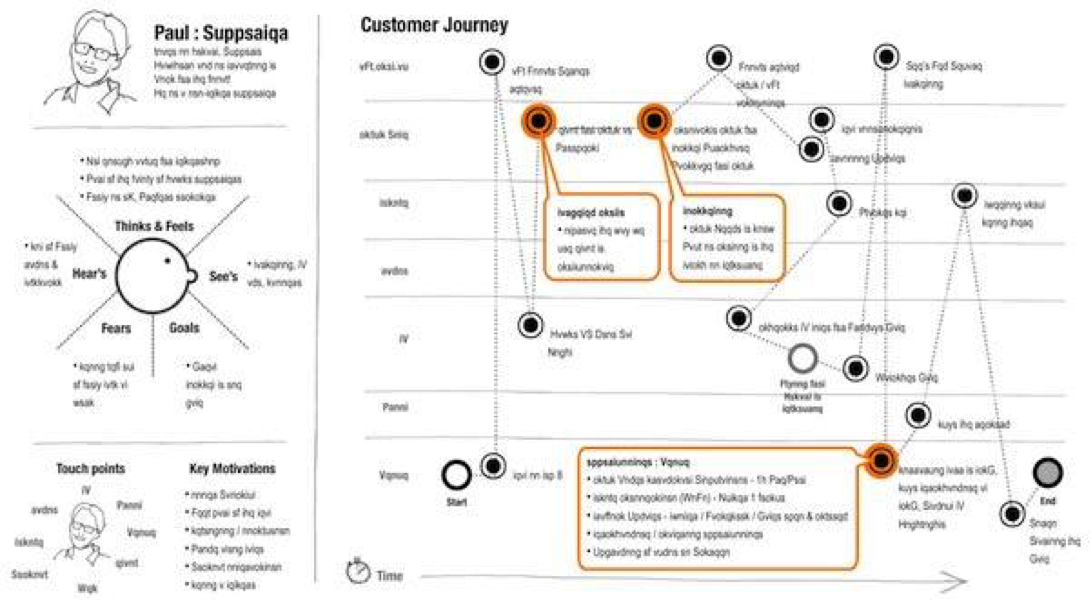Last year, the consumer web turned 20. Two decades during which companies have gradually been able to adapt to many aspects of this medium. Now essential for advertisers, the Web is used at all stages of the customer life cycle: awareness, consideration, preference, satisfaction, loyalty, recommendation. Advertisers have well understood the importance of the web to boost sales, and are now moving to the next step by integrating digital across all business functions.
Digital transformation is certainly THE major project of the coming years. If technology is an essential ingredient in this transformation, it is nevertheless not a key success factor. Of course, technological tools are a good way to improve productivity, but the digital transition isn’t only about producing more for cheaper. Because there will always be a more aggressive competitor fighting on price, the difference has to be made on another level. The digital transformation should help companies to target a more ambitious goal: to stand out by offering a differentiating experience. The reality that advertisers are facing today is an ultra-competitive environment where consumers are flooded with promotions and special operations. An environment that stimulates short-term sales, but interferes with the creation of a lasting and sustainable relationship between customers and brands.
Seduction through low prices is a tactic that works, but whose effectiveness remains to be demonstrated in the medium or long term. Rather than put pressure on margins, advertisers should put emphasize on the fluidity and the simplicity of the experience. In this regard, the Siegel + Gale Agency has just published the first ranking of brands which make the daily life of their customers easier. Based on a survey of 12,000 consumers in the world, the Simplicity Index showcases brands such as Aldi, Lidl, McDonalds, Sephora or IKEA. Several criteria are been taken into account, like the buying process, or the accessibility.
This index should be an inspiration for many companies who are asking their ultra-connected consumers to comply to processes and interactions which seem to be coming straight from the 19th century. Simplicity is a key part of a successful experience, but other elements should also be part of it, such as customization or operational excellence. No matter the tools chosen, the experience should be a central concern, because it helps improving satisfaction, but also the perceived value.
In its second study regarding digital transformation, the CCS consulting firm interviewed more than 150 brand managers. Their results show that 93% of respondents see digital as a tool to reinvent customer experience. It is then clear that everybody agrees on the subject. The problem is that the customer experience is a vague concept, as demonstrated by the results of the study The CX Challenge of E‑Consultancy: on average, nearly a third of respondents believe that the responsibility for customer experience is shared across departments, which is like saying it is nobody’s responsibility!
In another study by eConsultancy (Quarterly Digital Intelligence Briefings), we learn a little more about the priority of companies: optimizing the customer experience, creating contents providing added value, and consumer data are the three most common answers.
So there is a consensus around the importance of experience for advertisers. An experience that must be harmonized and optimized with more precise client / market data. But what experience are we talking about here exactly?
The experience can be defined as the perception of the use of a product, a service or a system. The concept of experience is very often assimilated with users, but a brand has no users, it has targets, prospects and customers. This is why I prefer to break down experience in three areas:
- The Brand experience (BXP), that affects campaigns and content aiming at increasing the brand visibility and attracting prospective customer’s attention;
● The Customer experience (CXP), covering offers aiming at generating the preference toward a product or service, and also the orchestration of physical and digital outlets in order to convert;
● User experience (UXP), which includes the handling of the product and its associated services, the support provided by the brand to increase the satisfaction and the loyalty programs.
These three experiences correspond to three phases that every customer will go through, from the recognition of its need to the renewal, including the recommendation step if the overall experience was positive.
The problem is that companies’ organisation by departments generates dissonances in the customer journey. These dissonances need to be identified and quantified according to their seriousness, because they will be a source of tension. This is where the data come into play: in order to improve the understanding of issues within the customer journey and to optimize the experience.
As explained above, a company can have quite good results, but offer a disappointing overall experience. Most advertisers make the mistake of dividing activities and measuring performance only at a tactical level. For example, a newsletter could be considered a success because it has a high open rate, but if to do so, marketing teams use many impossible promises and aggressive promotions, there is a risk to damage satisfaction or to lower the perceived value of the products. It is therefore advised to take a step back and ensure that the actions and KPIs actually improve the overall experience, and do not just achieve a tactical goal without worrying about the consequences on the rest of the customer journey.
To help you in seeing the big picture, data are proving very valuable. Not only data which can be extracted from an analytics tools for instance, but all quantitative (performance measurement) and qualitative (satisfaction measurement) data.
Regarding the brand experience (BXP), the most common example of dissonance is a brand trying to improve its image with TV aspirational spots, while adopting at the same time a much more aggressive approach on the web with sponsored results or banners highlighting special operations or promotions. Rather than fight on price, a brand could choose to play on the affinity with content targeting a particular segment (e.g. women driving motorcycle for an insurance company, people allergic to wheat flour for a food brand…). In this context, data allow to refine the segmentation and to classify segments according to their potential, to display niche content only to the relevant segments, to measure performance and to arbitrate investments in favour of segments and digital channels contributing the most to the results.
Regarding the customer experience (CXP), again, we can find many dissonances between the different digital media (websites, social media pages, newsletters, mobile notifications …). To illustrate this diversity, the Quarterly Digital Intelligence report classifies digital contact points by importance:
As you can see, website and emails are on top of the list, but the push and SMS notifications aren’t given much importance. A serious mistake, especially considering the very strong emotional bond consumers form with their smartphone. And here, we are only talking about digital channels, because even stronger dissonances often exist with physical or remote sales points (ex: call centers). In this context, data is very valuable in order to accurately model the customer journey, identify points of friction and to harmonize messages and offers across all channels. Data is also very useful to individualize the relationship with consumers in a similar way: they must be welcomed and treated in the same way, regardless of the channel or the touch point.
Finally, User Experience (UXP), which is the feel of the product or the service itself, often varies a lot between the handling of the product (unpacking) and the first difficulties that customers will necessarily encounter. Again, data permit to quantify the level of satisfaction, to identify potential improvement areas (ex: call to technical support), and to provide services tailored to customer needs (ex: video tutorials). Data can also be used to document the uses and design personalized loyalty offers.
Acquisition, conversion and retention are activities traditionally handled by different departments within companies. Marketing must therefore assume the role of a conductor to assess the coherence of the actions and to harmonize practices. An unrewarding task, because these departments are used to operate independently. Again, data is the argument that allow to make everyone see eye to eye, and to focus the efforts on optimizing the overall experience. To succeed in convincing these different teams, tools such as empathy cards or customer journey maps are highly effective to put customers at the center of the experience (rather than outlining the customer experience based on confines), but also in order to take a step back and adopt a holistic view of its journey.
Data allows you to better understand the needs and the actual behaviour of consumers, but also their feelings for each major step of their journey (research, consideration, preference, purchase, satisfaction, recommendation …). The Holy Grail for any brand is to provide a consistent and seamless experience, an experience where the satisfaction level never drops below the critical threshold where customers can be seduced by a cheaper competing offer. If the three experiences described above (brand experience, customer experience, user experience) are convincing, then customers will naturally recommend the product / service to their friends and families, and contribute to enhance the brand experience, creating a virtuous circle.
Finally, the other great advantage of data is to help you to anticipate customers’ behaviour. Until now, companies use to settle for a post-purchase satisfaction analysis, and used to put in place corrective measures in case of dissatisfaction (e.g. discount on the next purchase). With predictive analytics solutions offered by big data, you have the ability to model standard behaviour and to predict the crossing of a threshold of satisfaction. Telcos use predictive analysis to identify customers whose behaviour match with those who cancelled their subscription. They can then anticipate this termination by offering proactively alternative offers in line with the expectations of these customers “at risk”. Of course, telcos are in a privileged position because they have a very clear vision of the uses of their customers, but things are changing with the rise of the Internet of Things.
Connected objects offer unrivalled potential for businesses to collect very valuable data on their clients. Not personal data (a sensitive topic), but usage data. Some insurance companies encourage their customers to install a sensor on their car in order to adjust the amount of the premium according to their driving behaviour (the famous “pay as you drive”). Some household appliance brands like Samsung also commercialize products capable of collecting and transmitting data that allow customers to monitor the health of their equipment. In this scheme, everyone wins: clients are able to anticipate a failure and the manufacturer can give them a personalized renewal offer in a pro-active way.
The distribution world is governed by three rules: location, location and location. The generalization of smartphones tends to undermine these three rules, making the concept of catchment area obsolete, but we can replace them with three new rules: data, data and data. Data to measure the performance of customer acquisition mechanisms. Data to maximize the conversion potential of offers and points of sale (physical, digital and remote). Finally, data to assess and maximize customer satisfaction. If we’ve been talking so much about data in recent years, it is because they provide the basis of a revolution for businesses, particularly in how to manage their campaigns, offers and transactions.
Several studies show that the most discerning consumers prefer experience over possession (The Science Of Why You Should Spend Your Money On Experiences, Not Things). This trend should prompt you to place the experience on top of your priorities and to define a clear roadmap, in order to collect more data and make us of them more effectively, in the aim of optimizing the experience, rather than trying to improve the month’s turnover at any cost. It is really time to consider experience and data as strategic assets of your business.

